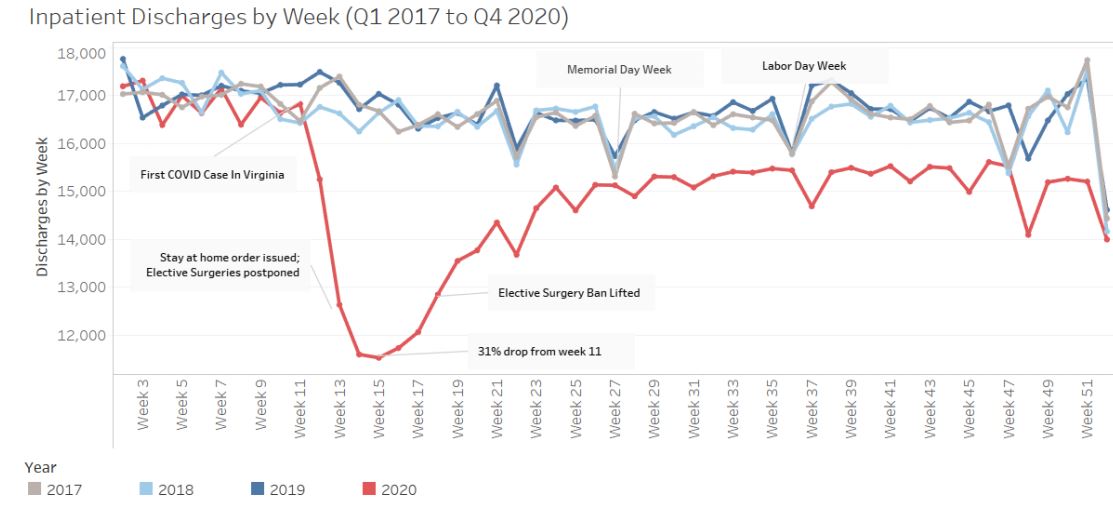by James A. Bacon
New Virginia Hospital & Healthcare Association (VHHA) data shows the impact of Governor Ralph Northam’s executive order banning elective surgeries last year. Hospital discharges across Virginia plunged from nearly 17,000 per week when the first COVID-19 cases were reported in the state to less than 12,000 — a drop of 31%. Then, after the ban was lifted, discharges rose to about 15,000 per week and stayed at that level — significantly lower than in previous years.
The discharge data, reported yesterday in a VHHA report, “COVID Hospitalization & ED Visit Trends,” includes both elective and non-elective inpatient hospitalizations.
The freefall in elective procedures cannot be attributed entirely to Northam’s executive order, issued from a fear that the epidemic might overwhelm hospitals with COVID-19 patients. Many hospitals began restricting discretionary procedures before the governor issued the edict, and many patients chose voluntarily to delay procedures for fear of exposing themselves to the virus in a healthcare facility.
Epidemiologists have raised concerns that fear of COVID and the ensuing decline in elective procedures meant that many Americans have not received medical tests, diagnoses and treatment that they should have, contributing to undetected deteriorating health conditions. Negative health impacts may not be visible in the statistics but could show up in future months or years.
In Virginia the impact of COVID and related shutdowns varied by procedure type. Hospitalizations tied to pregnancy and childbirth dropped significantly and stayed below normal. Other categories seeing lasting drops were diseases & disorders of the musculoskeletal system, urinary tract, ear, nose & throat, the digestive system, and the circulatory system.
Diagnostic categories showing an increase were related to alcohol and drug use, infectious & parasitic diseases, and multiple significant trauma. However, the increase in drug & alcohol hospitalizations represented only an incremental increase over previous levels, not a surge as some (including this author) had feared as an outcome of extended social isolation caused by COVID shutdown orders, as can see below.
Similarly, 2000 saw an uptick in the number of “multiple significant traumas,” a category associated with crime and domestic violence, as seen below.





